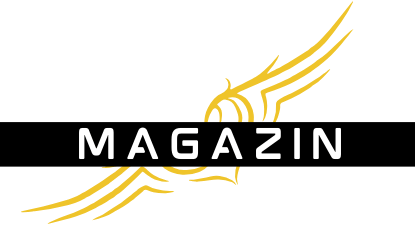Welcome to the bustling world of logistics, where every decision made is integral to the heartbeat of your business’s supply chain. In this modern era, understanding and refining both internal and external logistics is not just a task—it’s an art. This article delves deeply into the essential strategies and practices for optimizing material and product flows, aiming to strike a harmonious balance between cost-efficiency and customer satisfaction. Whether you’re a seasoned professional or a curious newcomer, this exploration promises to enrich your understanding and bolster your organization’s logistical prowess.
The Foundations of Internal Logistics
In the intricate domain of logistics, the internal processes form the backbone of a company’s efficiency. From the moment raw materials are received until the finished products are transported, each step in the supply chain demands meticulous attention.
Understanding the Internal Flow
Internal logistics encompasses every activity happening within your company’s walls. This includes inventory management, warehouse operations, and production processes. Mastery over these areas can significantly reduce costs and enhance overall efficiency.
- Inventory Management: Keeping a keen eye on stock levels ensures that the right amount of product is available, thus minimizing waste and avoiding stockouts.
- Warehouse Optimization: Strategic layout planning and technology utilization are crucial. A well-organized warehouse can streamline operations and expedite order fulfillment.
- Production Processes: Aligning production schedules with demand forecasts optimizes time and resources, reducing unnecessary expenditures.
Enhancing Internal Efficiency
Improving internal logistics often involves:
- Leveraging technology for real-time data insights.
- Training employees to adapt to evolving operational needs.
- Implementing lean manufacturing techniques to eliminate inefficiencies.
Consistency in internal logistics sets the foundation for seamless external operations, ensuring that your company’s internal gears are well-oiled and primed for action.
Navigating the Complexities of External Logistics
External logistics represent the interface between your company and the outside world. This expansive area covers everything from transport and distribution to customer delivery. It is where your products meet the market and where your supply chain extends beyond your immediate control.
The Role of Transportation
Transportation is the lifeline of external logistics. Selecting the right transport methods and managing flows can lead to cost savings and improved reliability.
- Mode Selection: Choose transport methods that align with your business needs. While air freight offers speed, sea and rail provide cost-effective solutions for less time-sensitive goods.
- Carrier Partnerships: Building strong relationships with carriers can result in favorable rates and reliable service.
Distribution Networks
Efficient distribution networks are vital for meeting customer demands.
- Hub-and-Spoke Models: Centralizing distribution through strategic hubs can streamline operations and cut costs.
- Direct-to-Customer Logistics: Leveraging direct delivery models can enhance customer satisfaction by reducing delivery times.
By optimizing external logistics, your company can ensure that goods are effectively reaching their destination, satisfying customer expectations, and maintaining competitive advantage in the market. {image_content}
The Intersection of Internal and External Logistics
While internal and external logistics operate in distinct arenas, their interplay is where true optimization is achieved. Understanding how these spheres influence each other is crucial in creating synergy across your supply chain.
Integration is Key
- Data Synchronization: Real-time data exchange between internal systems and external partners ensures coherent action and reduces delays.
- Collaborative Planning: Involving external partners in supply chain design promotes efficiency and shared responsibility.
Process Harmonization
To bridge the gap between internal and external operations, companies should:
- Implement Cross-Functional Teams: Encourage collaboration between departments to foster a holistic view of logistical challenges.
- Utilize Advanced Planning Systems: Integrated software solutions can forecast demand and streamline the flow of information.
By aligning internal processes with external demands, companies can achieve a more fluid and responsive logistics strategy, reducing costs and enhancing service levels.
As we conclude this exploration of logistics, remember that the journey to optimizing material and product flows is ongoing. Each decision, whether in your internal departments or across external networks, contributes to your company’s overall efficiency and success.
In a world where demand shifts rapidly and competition intensifies, staying ahead requires embracing modern solutions and fostering collaboration. By refining both internal and external logistics, your business can pave the way for streamlined operations, satisfied customers, and continued growth. As you stand at the crossroads of logistics strategy, choose the path of integration and innovation to drive your company’s future.
In this ever-evolving landscape, those who dare to innovate and adapt will undoubtedly lead the charge into the logistics of tomorrow. So, gear up and embark on this exciting journey with confidence and vision.
FAQ
What are the primary differences between internal and external logistics?
Internal logistics focuses on the movement and management of materials and products within a company’s boundaries, including tasks like warehousing and inventory control. External logistics, on the other hand, deals with the transportation and distribution of goods outside the organization to customers and suppliers.
How can companies enhance their internal logistics processes?
Companies can optimize internal logistics by implementing efficient inventory management systems, using automated tools for warehouse management, improving layout designs for better flow, and ensuring seamless coordination between different departments.
What are some key strategies for improving external logistics?
To enhance external logistics, organizations can utilize route optimization software, establish strong partnerships with reliable carriers, streamline the supply chain by investing in technology, and continuously evaluate performance metrics to identify areas for improvement.
Why is real-time tracking important in logistics operations?
Real-time tracking provides visibility into the movement of goods, allowing businesses to anticipate delays, manage inventory more effectively, and keep customers informed about delivery statuses, ultimately leading to improved decision-making and customer satisfaction.
What role does technology play in optimizing logistics operations?
Technology plays a crucial role in logistics optimization by providing tools for automation, data analytics for better forecasting, GPS for real-time tracking, and communication platforms that facilitate coordination among different stakeholders in the supply chain.

